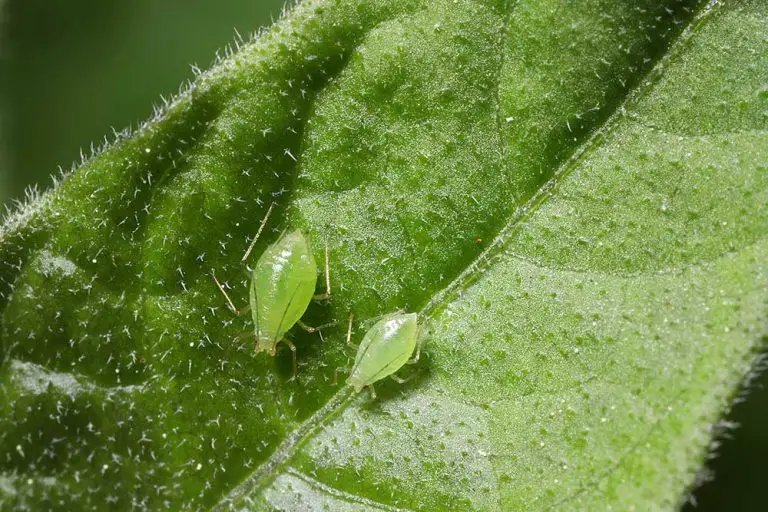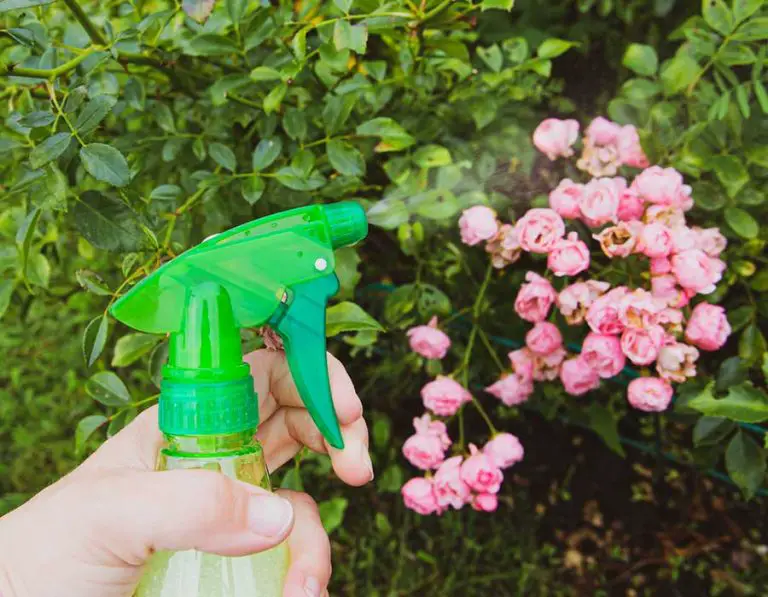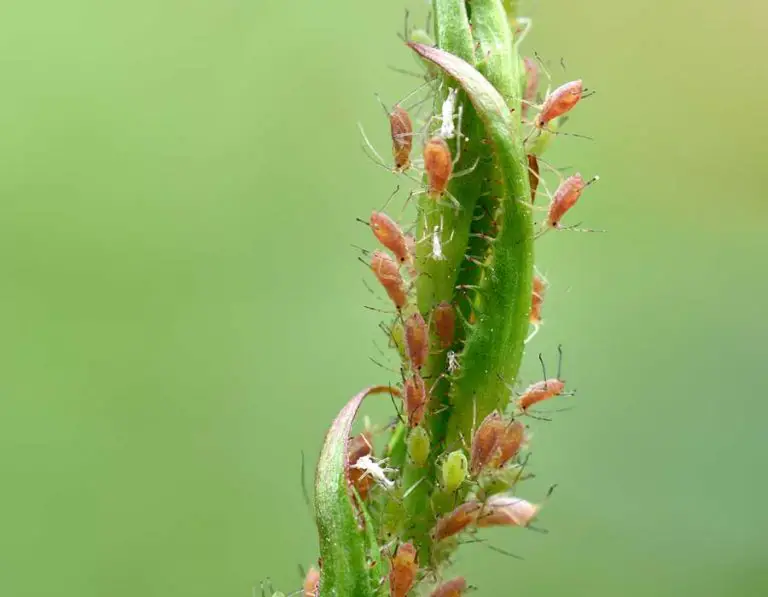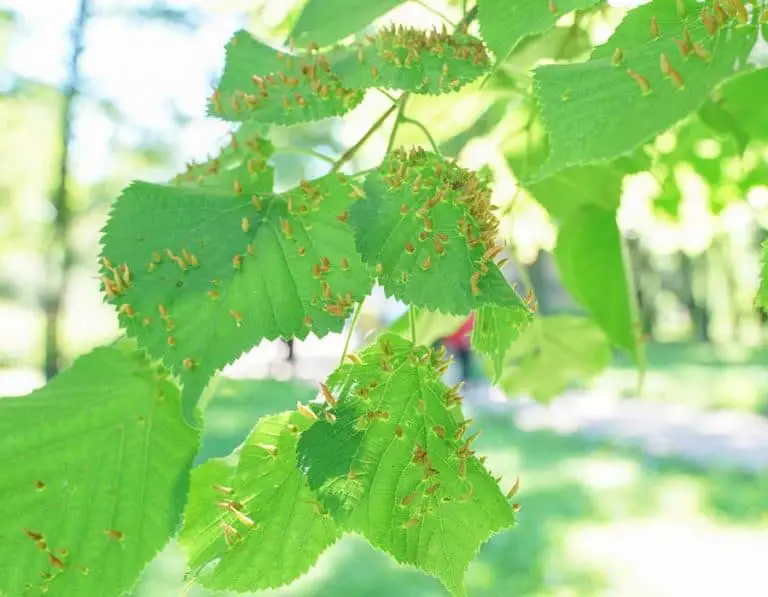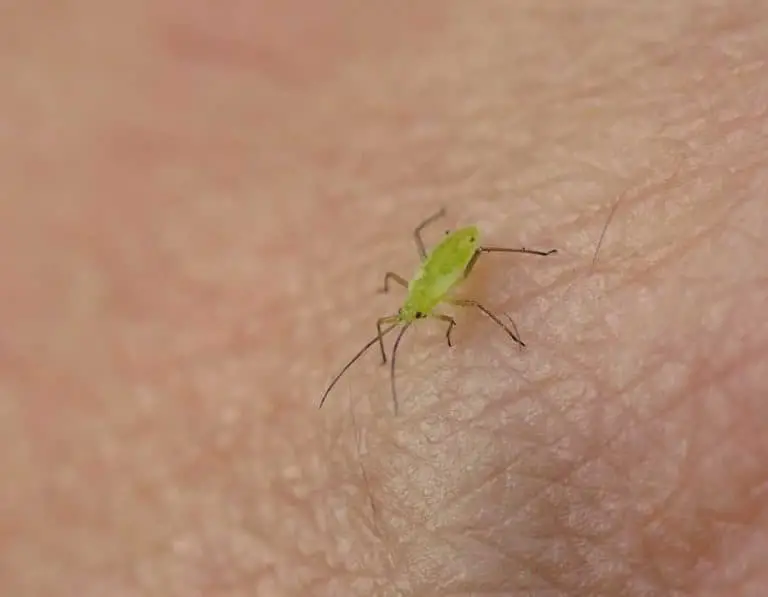What Do Aphids Look Like? How To Identify Them
Aphids are small insects with elongated bodies that feed on fruits, flowers, and other plants. They are known as invasive species as they damage plants and even kill them.
There are thousands of aphid species around the world and most have distinct coloring and sizing. The shape of aphids is similar across multiple species, however.
Aphids are small pear-shaped insects of different colors. They grow to a size between 1.5 and 3mm and they live and feed on plants. They can be winged or wingless and come in green, orange, red, and other colors.
Aphids are known to only eat a specific plant or flower. Rose aphids only live on roses while melon aphids are only seen on fruits.
The type of plant or fruit aphids live on doesn’t always influence their colors or shape.
Aphids have a pear-shaped body
Aphids are instantly recognizable by their pear-shaped body. These insects have a small head and a body that widens in the lower part around the abdomen.
Elongated body insects such as aphids are easy to spot on plants and flowers. They might only be difficult to spot when they have a camouflage color.
Aphids have different colors
Aphids come in all colors. They can be black, green, yellow, red, brown, or even multi-colored.
These insects can have nymphs of a similar color or a different color.
Aphid nymphs typically look exactly like miniature adults. They have the same shape and color but in a larger body.
Aphids go to growth stages known as molts. A molt is a process where the aphid sheds its skin or exoskeleton so it can grow.
4 to 8 molts are common in the lifetime of an aphid.
Their color doesn’t change during the molt.
Cabbage aphid
Cabbage aphids live on cabbages and other leafy vegetables. They have a gray-green or green body color which makes them easy to spot.
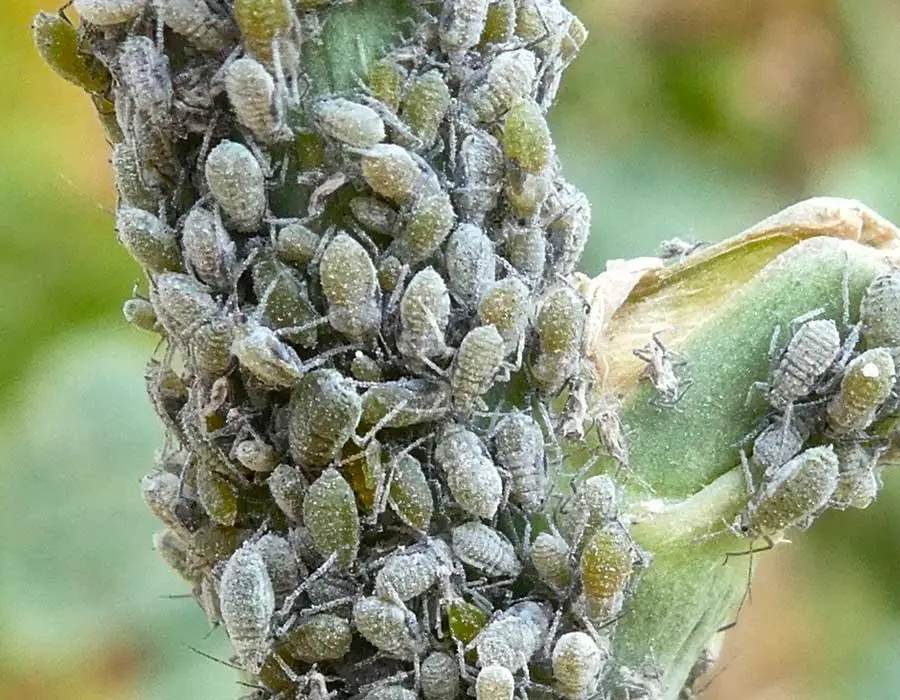
Rose aphid
Rose aphids are orange or green. These insects only live on roses and similar-looking flowers. They feed on the petals of the rose flower and they are easy to distinguish as they typically invade rose plants.
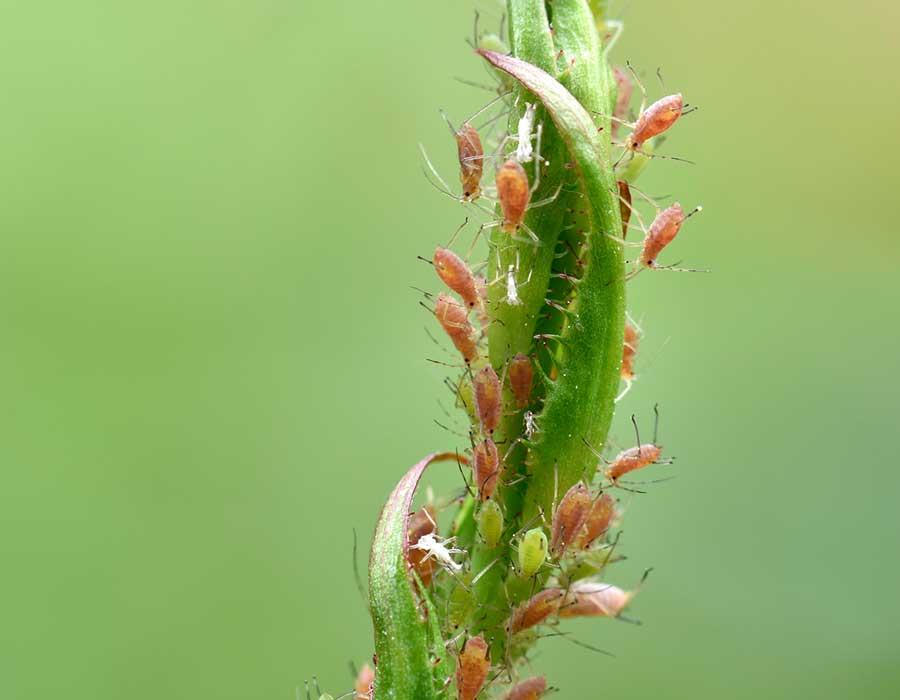
Melon aphid
Melon aphids live on melons and melon flowers. They are either yellow or orange and they are known to be some of the most vividly-colored aphid species.
Melon aphids might have a different color head. Yellow melon aphids have a dark brown head.
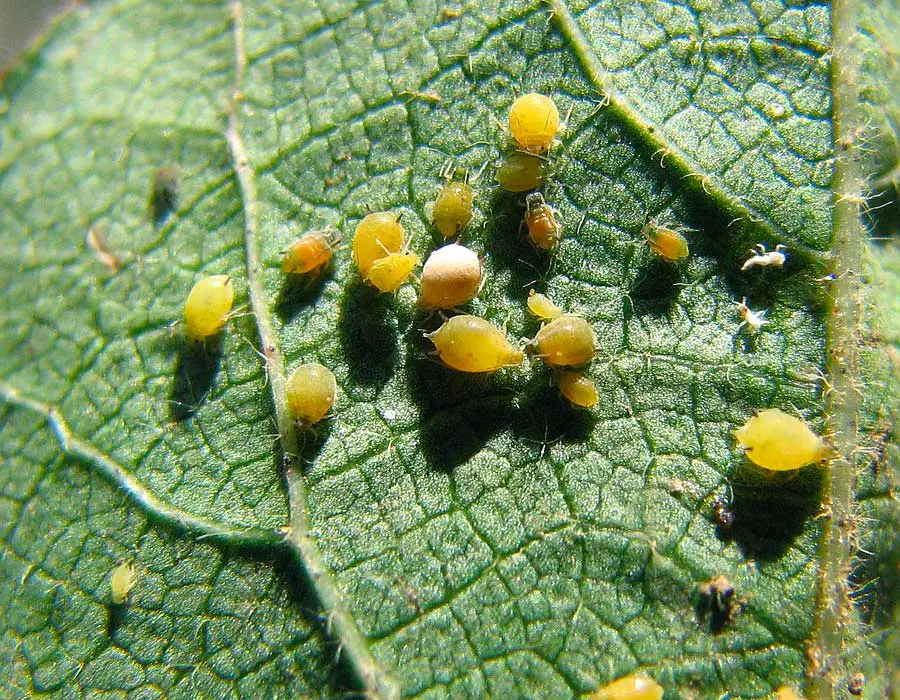
Potato aphid
Potato aphids come in multiple colors. They are the best example of how an aphid species can look differently from location to location.
Potato aphids can be green, yellow, yellow-green, pink, or red. These aphids can also come in faded versions of these colors.
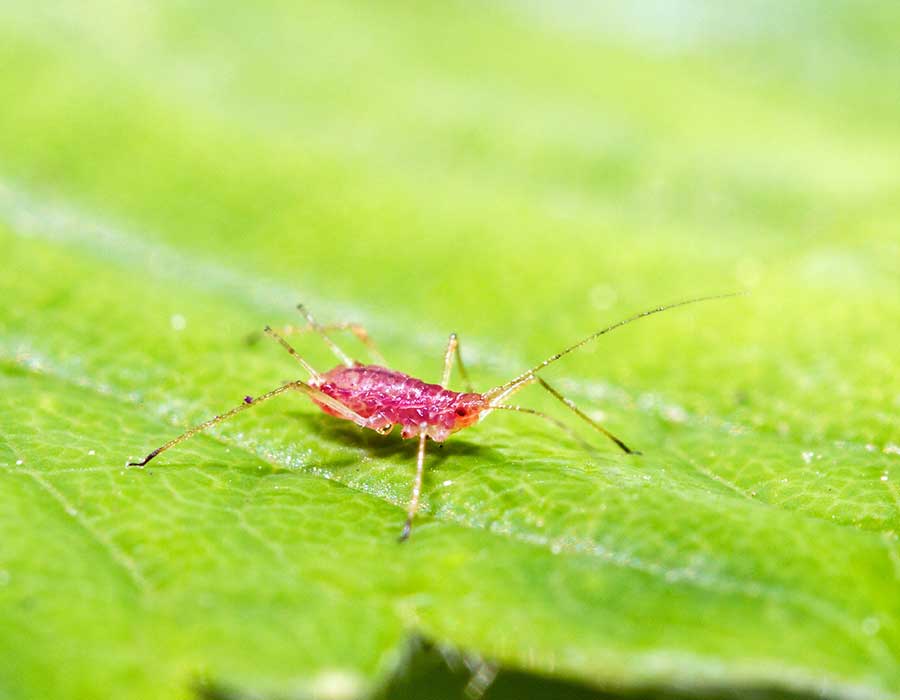
Long antennae are specific to aphids
Aphids are further categorized by their long antennae. Their antennae are of a different color, normally black.
Their antennae are used for orientation. Aphids rely on antennae to perceive smells. They are guided by their antennae toward plants, flowers, and fruits.
Aphids that can fly rely on their antennae to pick up aromatic chemicals from flowers and plants so that they know where to land or where to crawl for food.
Aphids have long legs
Aphids have long legs compared to their body size. These legs aren’t as long as the legs of spiders, but they are longer than the legs of the most potent aphid natural predator, ladybugs.
Aphid legs help them move along quickly. Since many aphids can’t fly they need to use their legs to climb up plants.
Some aphids are winged while others are wingless
Aphids can be winged or wingless depending on their species. Some winged aphids can’t fly as they only have short wings.
A further difference can be seen between the sexes as some aphid species are only known to have winged females while males can’t fly.
Even winged aphids can’t fly over long distances. This is best exemplified by their overwintering habits.
Aphids lay eggs right next to the plants they eat. These eggs overwinter right next to these plants so that the newly emerged aphids don’t have to travel long distances when emerging in the spring.
Aphids leave a black substance on leaves
Aphids can be further identified by the traces they live on leaves and plants. These are normally black spots, highly visible on leaves.
These black spots can cover the entire surface of the leaf in many cases. The substance itself is honeydew or plant residue that isn’t digested by the aphid.
This black substance can eventually kill a plant. It hinders its photosynthesis process and stops plants from growing.
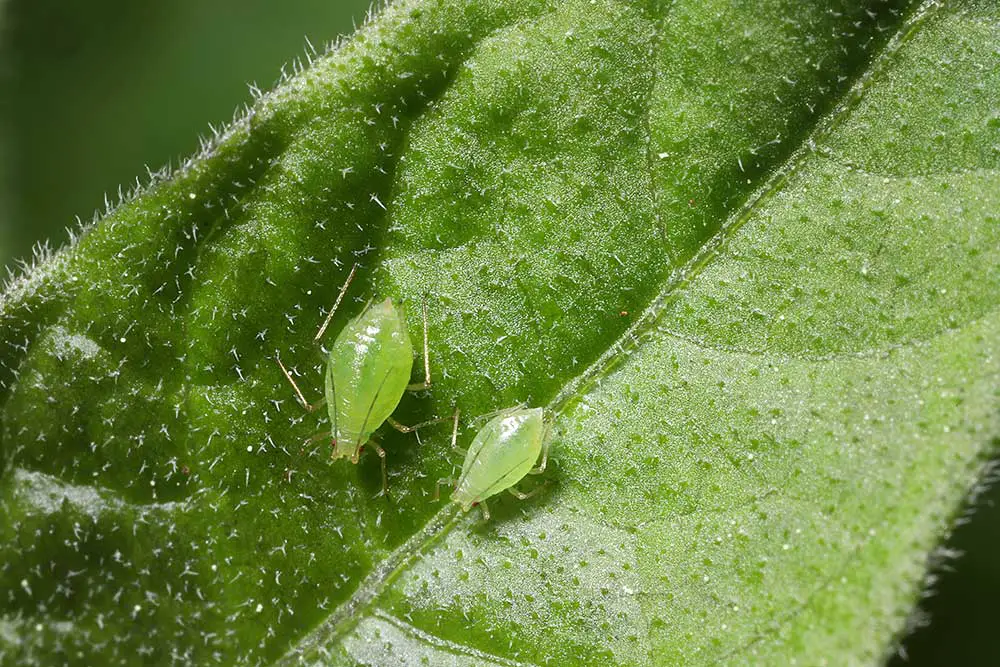
What do aphid eggs look like?
Aphid eggs are small and elliptical. They are always attached to leaves or plant stems. These eggs are normally seen in clusters of up to a few hundred on plants.
Aphid eggs are seldom seen separately. Whenever you see only a handful of eggs you can expect more to follow as aphids can reproduce both sexually and asexually.
What are wooly aphids?
Wooly aphids are a species of insects that are still aphids but characterized by a fuzzy exterior called wool.
While most call it wool, this exterior coating is a type of wax made by aphids.
It can be identified by its white fuzzy texture. Wooly aphids have the same characteristics as regular aphids in terms of size, diet, and habitat.
Summary
Aphids are small to very small insects that are soft and colorful. They have a pear-shaped body which makes them distinct compared to other pests in the garden.
Aphids live on plants, trees, fruits, and flowers. They feed on plant leaves and they can have vivid coloring.
Insects such as aphids come in red, orange, pink, yellow, green, and even black coloring. Aphids can have uniform colorings such as in the case of green aphids or a multi-colored body such as Melon aphids.
Young aphids or aphid nymphs are miniature adults. They have the same color and shape as adult aphids.

